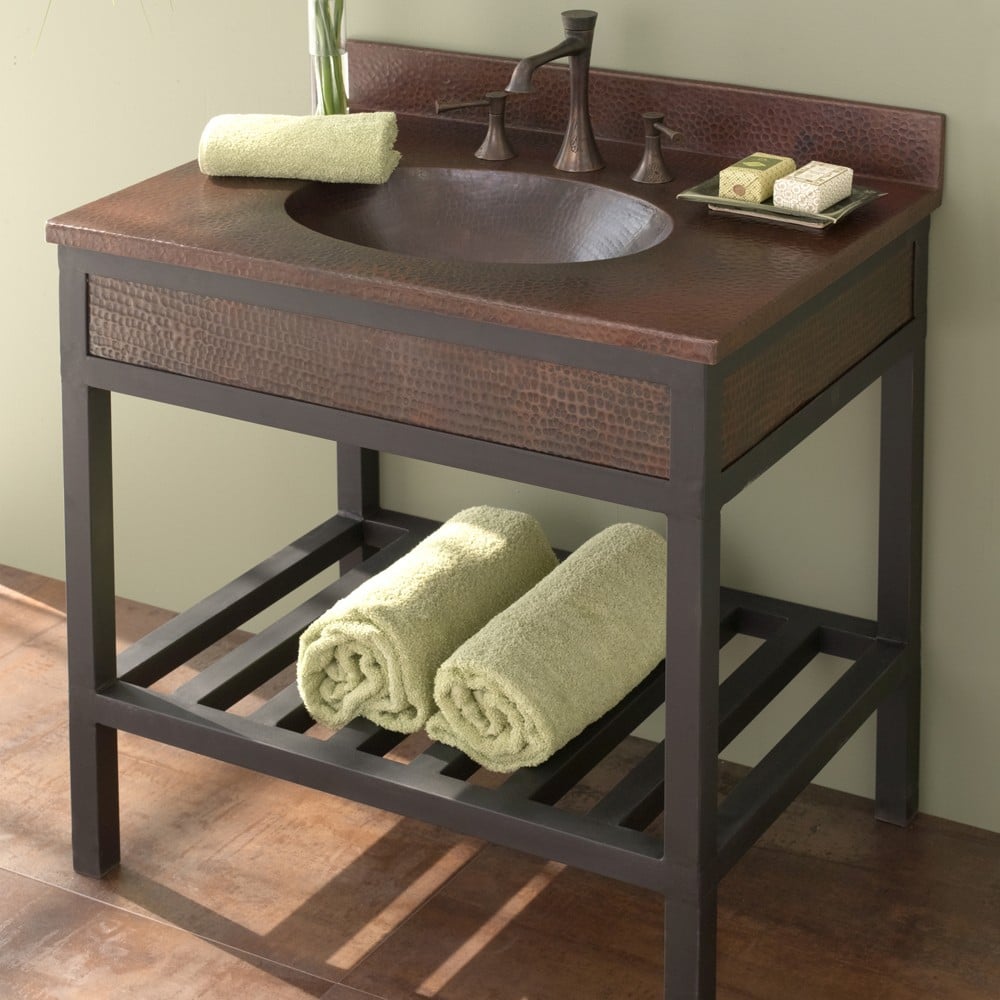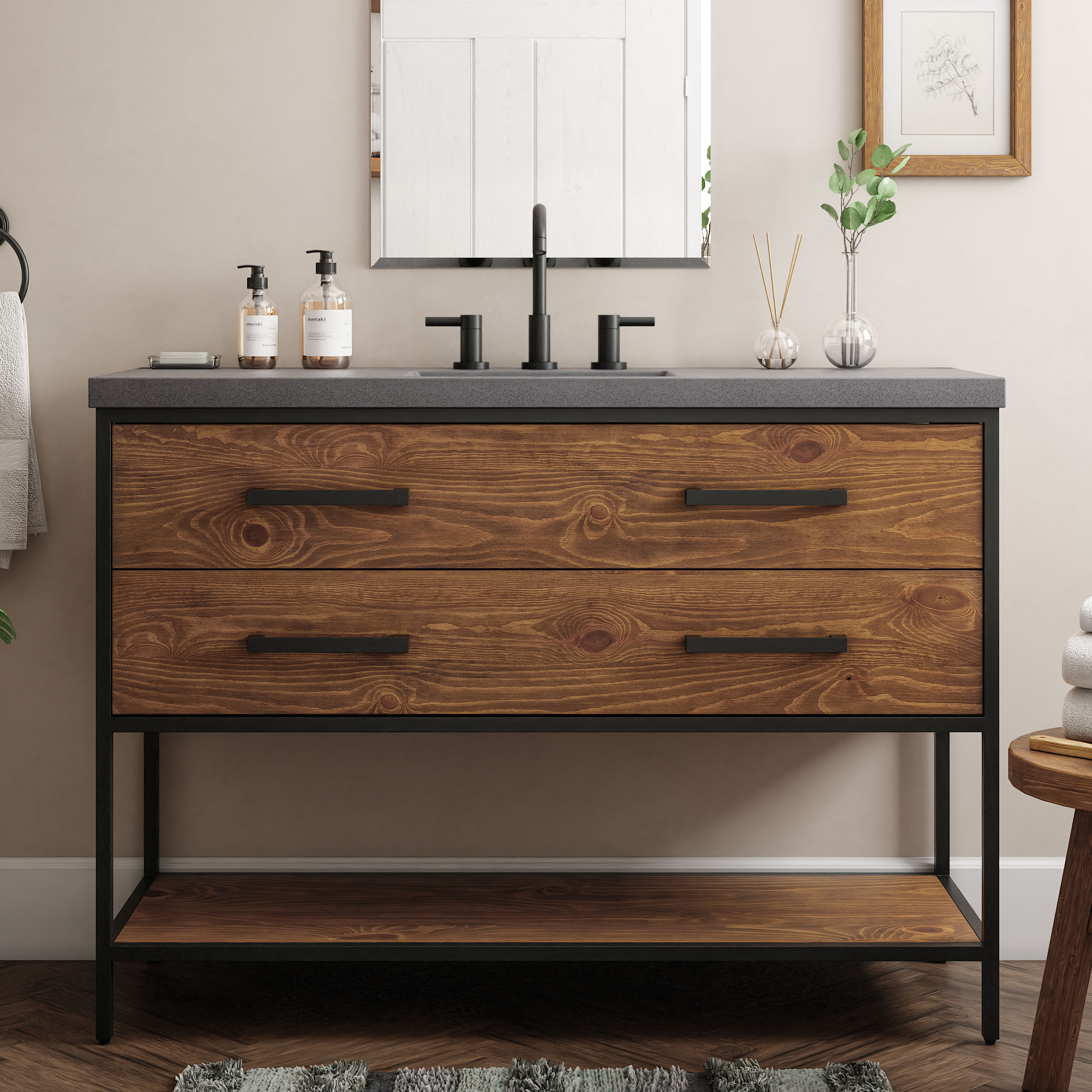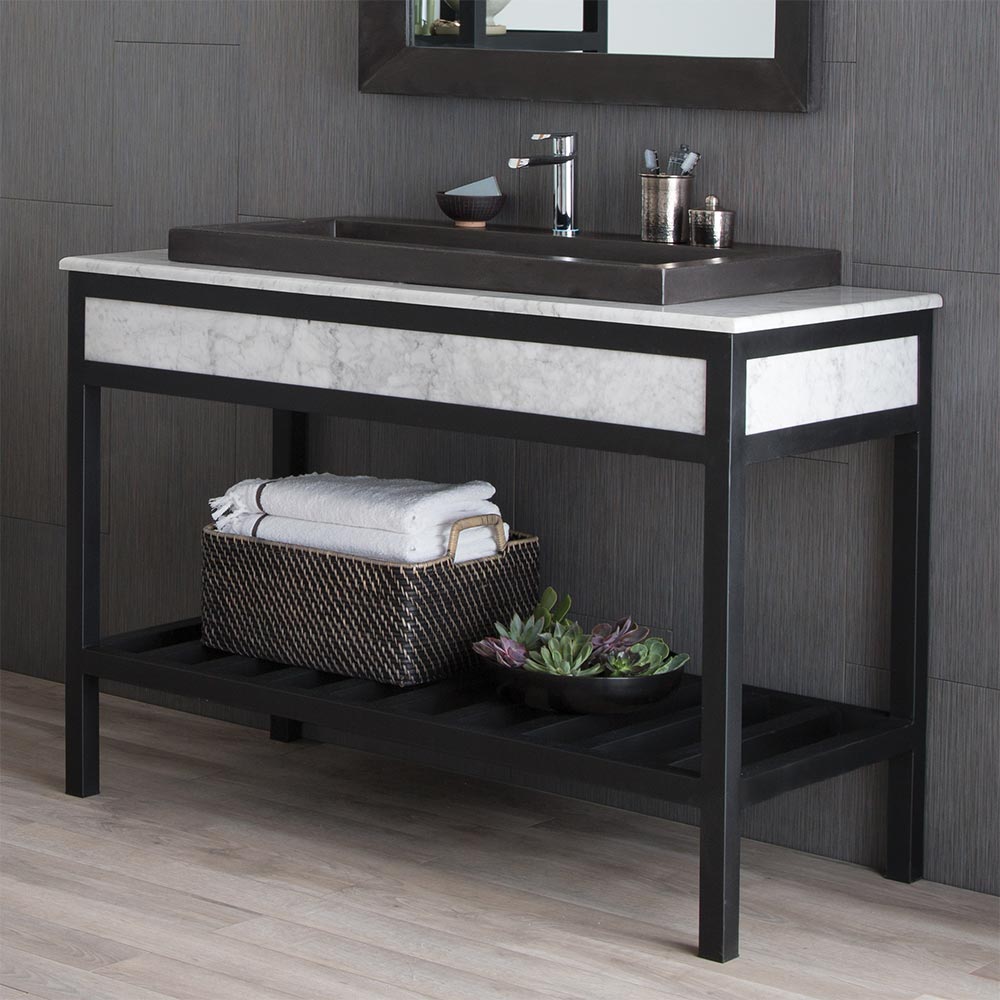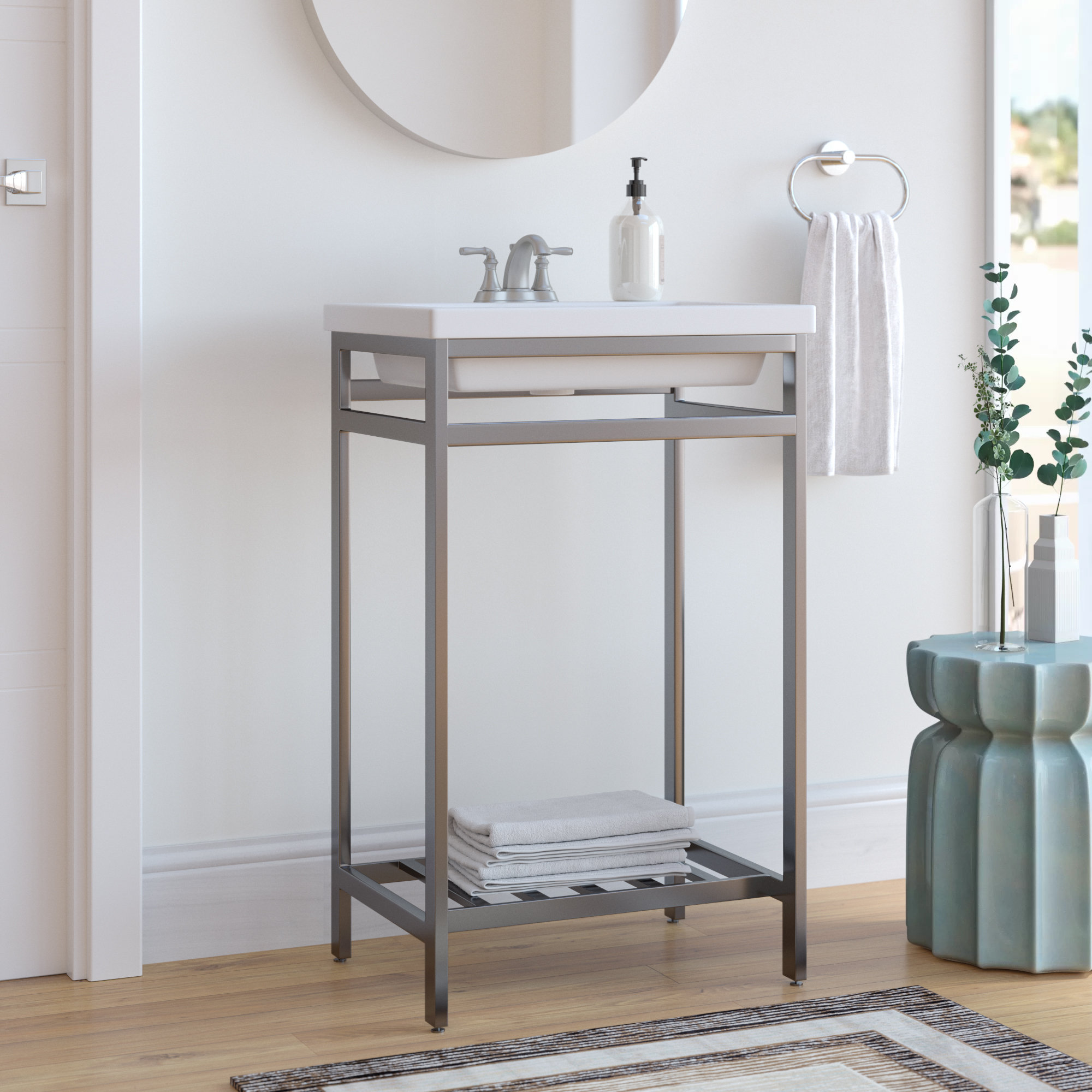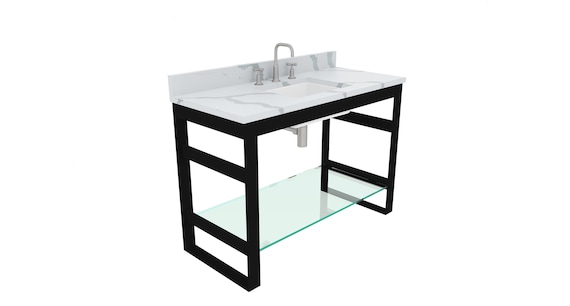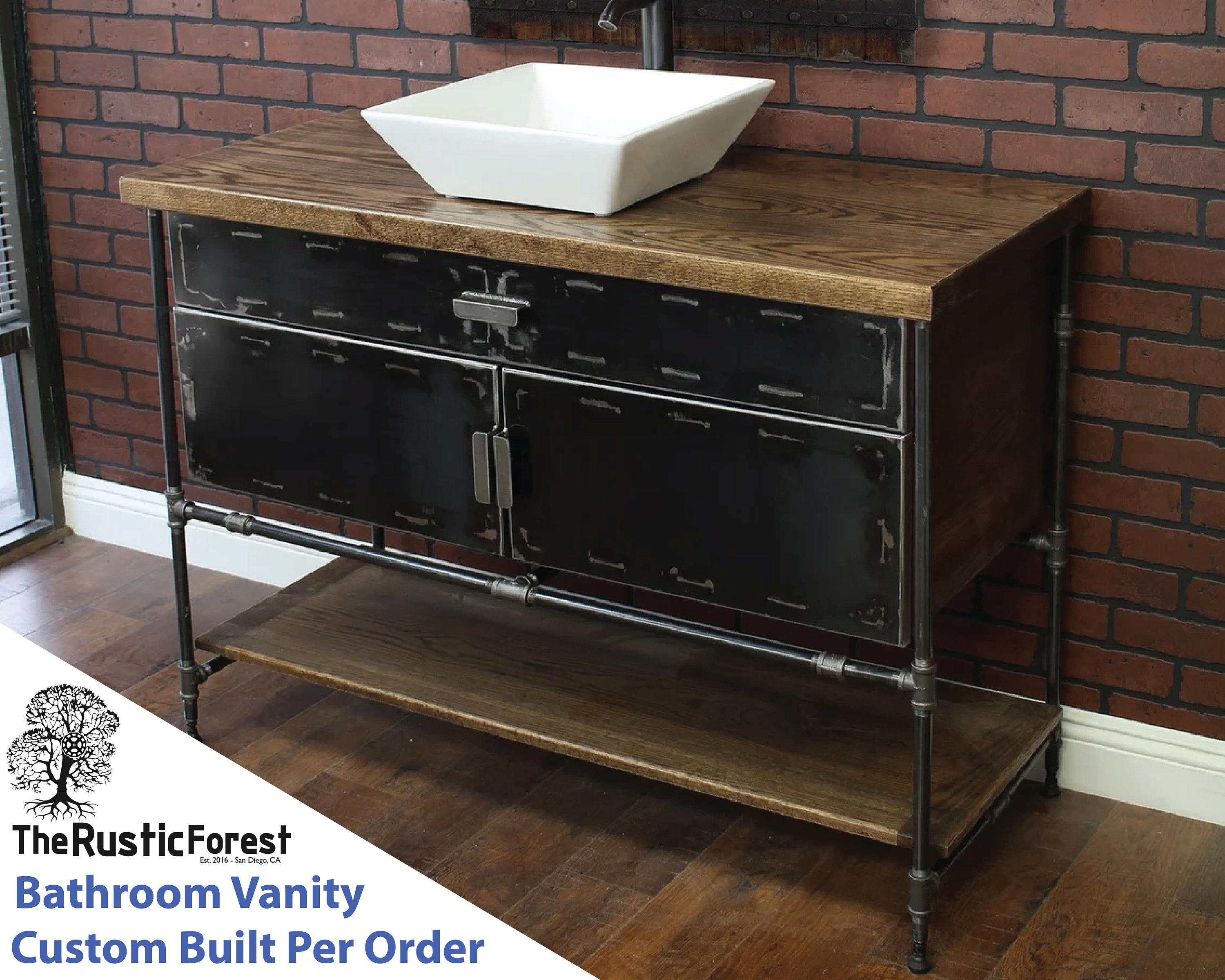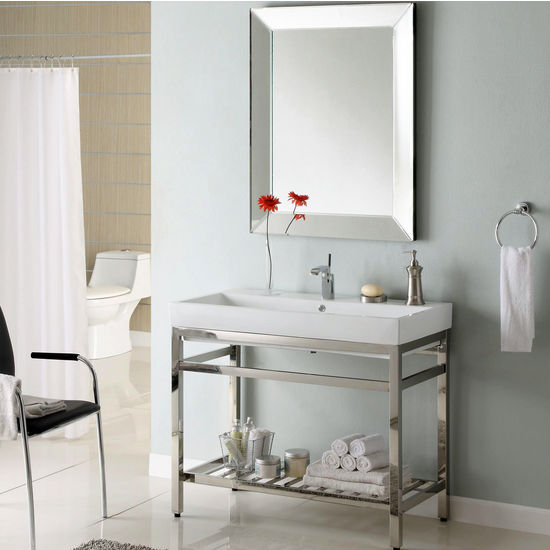The Benefits of Choosing a Steel Bathroom Vanity
When I first thought about upgrading my bathroom, I was intrigued by the idea of a steel bathroom vanity. It wasn’t the most obvious choice, but once I explored the benefits, I was hooked. Steel might seem cold or industrial, but trust me—it can transform your bathroom in ways you might not expect.
- Durability that Stands the Test of Time One of the standout benefits of a steel vanity is its durability. Unlike wood, which can warp or degrade over time with exposure to moisture, steel is highly resistant to water damage. This is crucial in a bathroom setting where humidity can wreak havoc on materials. I love that I don’t have to worry about my vanity losing its shape or strength after a few years.
- Low Maintenance, High Performance Steel is one of the easiest materials to maintain. You don’t need special cleaning solutions—just a basic wipe-down with a damp cloth keeps it looking pristine. I appreciate how steel resists stains and doesn’t absorb odors, making it ideal for a high-traffic space like the bathroom. It’s like having a vanity that does half the work for me.
- Modern and Sleek Aesthetic One thing that immediately drew me to steel vanities is their sleek, modern look. There’s something about the reflective quality of steel that makes a bathroom feel fresh and clean. Whether you’re going for an industrial vibe or simply want a vanity that feels contemporary, steel is a perfect choice. It adds a touch of sophistication that’s hard to replicate with other materials.
- Eco-Friendly and Sustainable Option For those of us who care about the environment, a steel bathroom vanity is a solid choice. Steel is 100% recyclable, so when its lifecycle eventually ends, it can be reused without contributing to landfills. Knowing that my vanity is both stylish and sustainable gives me peace of mind.
- Customizable Finishes and Looks While the word “steel” might make you think of a shiny silver finish, there are plenty of options for customization. From brushed nickel to matte black, steel vanities come in a range of finishes. I was pleasantly surprised at how flexible the material is when it comes to aesthetics, allowing me to find the perfect match for my bathroom décor.
- A Hygienic Choice for the Bathroom Bathrooms can be breeding grounds for bacteria, but steel is naturally resistant to microbes. This is an excellent bonus for anyone concerned about hygiene. I love that I don’t have to worry as much about germs lingering on the surface of my vanity—it’s one less thing to stress about in my daily cleaning routine.
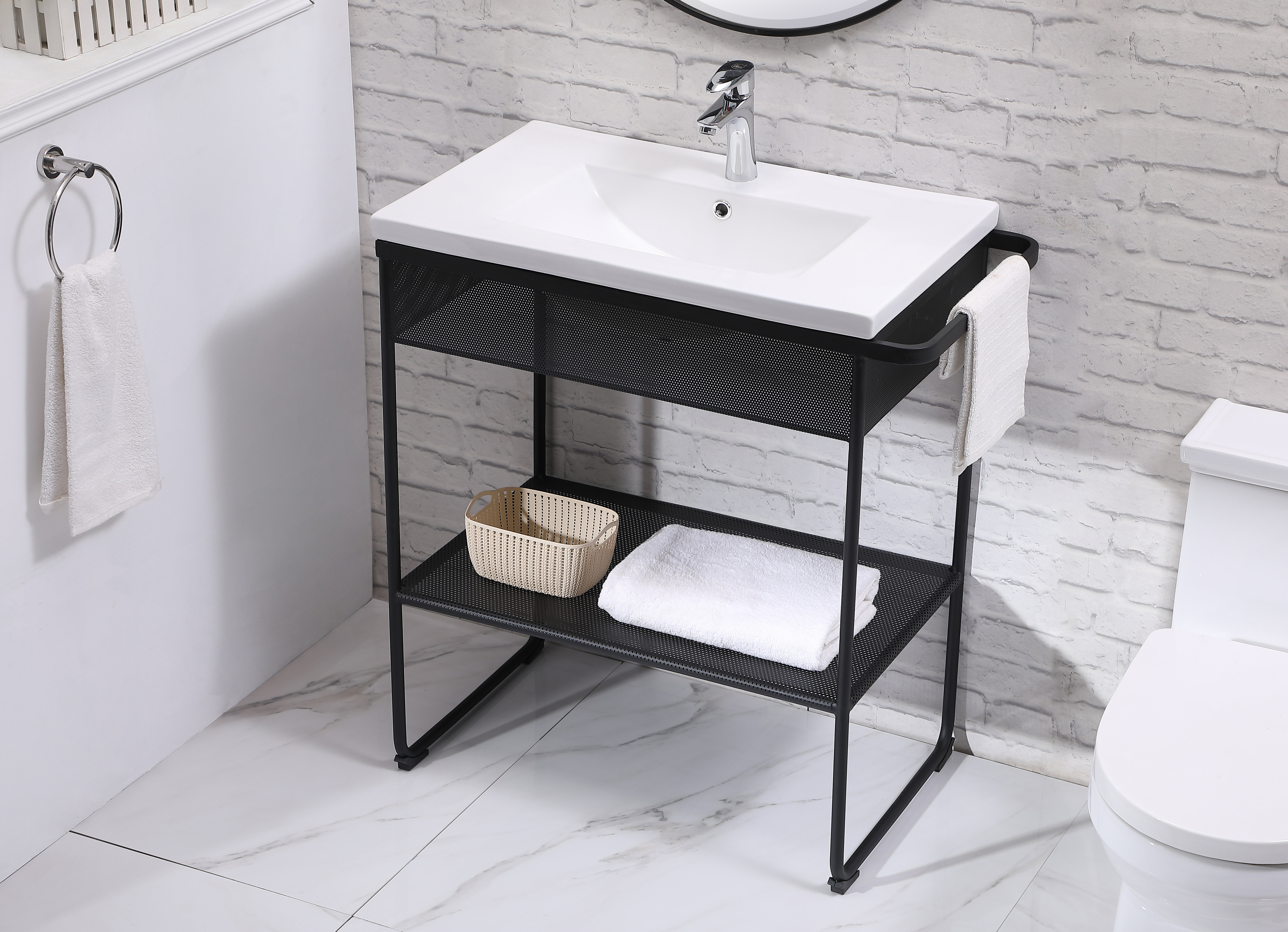
Different Styles and Designs of Steel Vanities
When I first heard about steel vanities, I envisioned something purely industrial and basic. But as I dug deeper, I realized the range of styles and designs available is vast. Steel vanities aren’t just for modern or minimalist bathrooms—they can suit a variety of aesthetic preferences, from traditional to ultra-modern.
Industrial Chic If you’re a fan of exposed pipes, brick walls, and open spaces, an industrial-style steel vanity might be perfect for you. This design often features raw, unfinished edges and pairs beautifully with elements like concrete countertops or rustic wood shelving. When I opted for an industrial steel vanity, it gave my bathroom that edgy, loft-style vibe I had always admired.
Minimalist and Modern For those who prefer clean lines and simple elegance, a minimalist steel vanity is a great option. These vanities often feature sleek, unembellished surfaces with a focus on functionality. I love how these designs can open up a bathroom, creating a sense of space and serenity. Plus, they’re easy to keep clean—no fussy details to deal with!
Vintage-Inspired Designs Believe it or not, steel vanities can work in a vintage or retro-inspired bathroom as well. Some designs mimic the look of antique washstands, with intricate detailing and softer edges. I’ve seen steel vanities that evoke a sense of nostalgia, and they can be perfect for creating a blend of old-world charm with modern functionality.
Floating Steel Vanities One of my favorite design trends is the floating vanity. Steel works particularly well for this style, as it’s strong enough to support the weight without needing bulky supports. A floating steel vanity gives your bathroom an airy, spacious feel, which is fantastic for smaller bathrooms. I opted for a floating model, and I love how it opened up my space.
Double Sink Steel Vanities If you have a larger bathroom or share your space with a partner, a double-sink steel vanity can be a real game-changer. These vanities provide ample space for two people to get ready simultaneously. When I upgraded to a double vanity, I found that it made our morning routines so much smoother. Plus, the sleek steel design kept it from feeling overly bulky.
Steel Vanities with Integrated Storage For those of us who need storage space but don’t want to compromise on design, steel vanities with built-in storage options are a blessing. Whether it’s open shelving, drawers, or cabinets, these vanities offer a mix of functionality and style. I love that I can keep my bathroom essentials hidden away without cluttering up the sleek steel surface.
How to Choose the Right Size and Shape for Your Space
Choosing the right size and shape for a bathroom vanity can be tricky, especially when you’re dealing with a small or awkwardly shaped space. I’ve made the mistake of going too big or picking something that didn’t quite fit, so here’s what I’ve learned from my experience.
Assess Your Bathroom Layout The first thing I did before picking a vanity was to take a good look at the layout of my bathroom. It’s important to consider the placement of your plumbing, as well as where your doors and windows are located. A vanity might look beautiful, but if it blocks a door from opening or leaves no space to move around, it’s not going to work.
Measure the Available Space Measuring accurately is key. I’ve found it helpful to not only measure the width and depth of the available space but also to think about the flow of the room. In one of my earlier vanity purchases, I failed to leave enough clearance for the bathroom door to open fully, which became a daily annoyance. Now, I make sure to double-check all measurements before committing.
Consider the Shape of Your Vanity Vanities come in a variety of shapes, from rectangular to more rounded options. I initially assumed that rectangular was the way to go, but in smaller spaces, a rounded vanity can make a big difference. The softer curves take up less visual space, making the bathroom feel less cramped.
Single vs. Double Sink Options Deciding between a single or double sink vanity is a major decision. If you share your bathroom, a double sink can be life-changing. However, if your bathroom is on the smaller side, a single sink vanity might be the better option to keep things spacious. When I had a smaller bathroom, I stuck with a single sink, and it made the space feel more open.
Floating vs. Freestanding Vanities Floating vanities are perfect if you’re trying to create a sense of space in a smaller bathroom. I love how they give the illusion of more room, especially when paired with a large mirror. Freestanding vanities, on the other hand, offer more storage space and feel more substantial. The choice depends on the size of your bathroom and your storage needs.
Balance Between Style and Function As tempting as it is to choose a vanity based on looks alone, I’ve learned that functionality is just as important. It’s all about balance—find something that looks great but also meets your practical needs. For me, having adequate counter space was crucial, so I opted for a vanity with a broader surface even in a smaller bathroom.
Maintenance Tips for Keeping Your Steel Vanity Shining
I’ll be honest—one of the reasons I chose a steel vanity for my bathroom was because I thought it would be low maintenance. While that’s mostly true, I’ve discovered a few key tips that have helped me keep my vanity looking shiny and new over time.
Regular Cleaning with Gentle Products The best part about steel is that it doesn’t require any fancy cleaning products. A simple solution of warm water and mild dish soap is usually all it takes. I’ve found that using a soft microfiber cloth works wonders for keeping the surface streak-free. The key is to clean regularly, especially in areas prone to water splashes or fingerprints.
Avoiding Harsh Chemicals One mistake I made early on was using a harsh cleaner that left tiny scratches on the surface of my vanity. Steel is durable, but it can still be damaged by abrasive materials or harsh chemicals. Now, I stick to gentler cleaning products and avoid anything with bleach or ammonia.
Drying After Use to Prevent Water Spots Water spots can dull the shine of a steel vanity if left unchecked. I’ve made it a habit to quickly wipe down the surface after using the sink to prevent water from drying and leaving marks. It only takes a minute, but it makes a big difference in keeping the vanity looking polished.
Dealing with Fingerprints and Smudges If you’re like me and hate seeing fingerprints on your vanity, steel might seem like a tricky material. The good news is that smudges are easy to clean with the right technique. I use a small amount of glass cleaner or vinegar and wipe with a microfiber cloth. This method leaves my vanity looking spotless without too much effort.
Polishing for Extra Shine Every now and then, I like to give my steel vanity a little extra love by polishing it. I use a stainless-steel cleaner or a bit of olive oil on a soft cloth to restore its shine. This step isn’t necessary every day, but it’s a great way to make the vanity sparkle when I want my bathroom to look its best.
Addressing Scratches and Dents While steel is resilient, it’s not entirely immune to scratches and dents. If I notice a small scratch, I use a stainless-steel scratch remover, which can be found at most hardware stores. For deeper dents, it’s best to consult a professional, but small imperfections are usually easy to buff out on my own.
Combining Steel Vanities with Various Bathroom Décor Themes
I never imagined how versatile a steel vanity could be until I started playing around with different décor ideas. Steel is neutral enough to blend with various styles, but it can also be a bold statement piece if you know how to combine it with the right elements.
Modern and Minimalist Bathroom Themes Steel vanities are a perfect fit for modern and minimalist bathrooms. The clean lines and sleek surfaces create a sense of order and calm. When I designed my bathroom with a minimalist approach, I kept everything simple—neutral colors, minimal décor, and a floating steel vanity. It turned out beautifully, and the vanity became a centerpiece without overwhelming the space.
Industrial-Inspired Spaces If you’re a fan of the industrial look, a steel vanity can be your go-to. I’ve seen it paired with exposed brick walls, black accents, and reclaimed wood shelves to create that loft-like vibe. It’s the kind of style that feels rugged yet refined. When I experimented with industrial design, I loved how the vanity complemented the raw, unfinished look of the other elements.
Blending with Natural Materials Surprisingly, steel vanities also pair well with natural materials like wood and stone. I added a few wooden accessories and stone tiles to my bathroom, and the contrast between the sleek vanity and the earthy textures was stunning. The mix of materials added warmth and balance to the room, making it feel both modern and welcoming.
Going for a Retro Vibe A steel vanity doesn’t have to feel cold or futuristic—it can actually work in a retro-themed bathroom. I’ve seen vanities with softer, rounded edges or vintage-inspired hardware that fit perfectly in a mid-century modern space. Adding pastel tiles and quirky, retro light fixtures gave my bathroom a playful, nostalgic feel while keeping the vanity at the heart of the design.
Incorporating Bold Colors If you love bold colors, don’t shy away from pairing them with a steel vanity. I once painted my bathroom walls a deep, moody blue and was surprised at how beautifully the steel vanity stood out against the dark background. It’s a striking combination that can add depth and personality to your bathroom.
Adding Soft Textures for Contrast To balance out the coolness of steel, I like to add soft textures like plush towels, fabric shower curtains, or even a cozy bathmat. The contrast between the soft materials and the sleek steel creates a balanced and inviting space. It’s one of my favorite ways to make a modern bathroom feel more comfortable and lived-in.
Installing a Steel Bathroom Vanity: What You Need to Know
Installing a steel vanity in your bathroom can feel intimidating, especially if you’re tackling it as a DIY project. But after going through the process myself, I realized it’s manageable with the right preparation and tools. Here are a few things I learned along the way.
Plan Your Plumbing Carefully Before anything else, I made sure my plumbing was in place and ready for the vanity installation. This step is critical because steel vanities are often heavier than other materials, and I didn’t want to end up with plumbing issues after the fact. I consulted with a plumber to ensure everything was aligned before starting the installation.
Prepping the Wall and Floor Since steel vanities can be heavy, I made sure the wall and floor were properly reinforced. If you’re opting for a floating vanity, you’ll need to secure it into wall studs to handle the weight. I didn’t want to risk the vanity coming loose, so I double-checked that everything was stable before mounting.
Tools You’ll Need Having the right tools made the process much smoother. I used a stud finder, drill, level, and wrench, along with the mounting hardware that came with the vanity. One tip I picked up is to have someone help you lift and position the vanity—it’s not a one-person job!
Mounting the Vanity Once everything was prepped, it was time to mount the vanity. I started by marking where the mounting brackets would go, ensuring everything was level. After that, I drilled the brackets into place and carefully lifted the vanity onto them. It took some adjustments to get it just right, but once it was in place, it looked incredible.
Connecting the Plumbing After mounting the vanity, it was time to reconnect the plumbing. I followed the manufacturer’s instructions closely, but if you’re not comfortable with plumbing, this might be a good time to call in a professional. I found it helpful to have a plumber inspect my work to ensure everything was watertight and functioning properly.
Finishing Touches With the vanity installed, I added the finishing touches like the faucet and mirror. The entire installation process took a couple of hours, but seeing the end result made it all worth it. My new steel vanity transformed the bathroom, and I was thrilled with how sleek and modern it looked.
Common Mistakes to Avoid When Selecting a Steel Bathroom Vanity
As much as I love my steel vanity now, I’ve made a few mistakes along the way. Avoiding these common pitfalls can save you time, money, and frustration.
Not Measuring Your Space Accurately One of the most common mistakes is not measuring your bathroom accurately before choosing a vanity. I once purchased a vanity that was too wide for my space, leaving me with little room to move around. Now, I always measure multiple times and consider the space needed for doors, drawers, and plumbing.
Overlooking the Weight of the Vanity Steel vanities can be heavy, especially if they’re freestanding or have integrated sinks. One mistake I made was not considering the weight when planning the installation. Be sure your bathroom wall or floor can support the vanity, and if you’re installing a floating vanity, make sure to anchor it securely into studs.
Ignoring Storage Needs It’s easy to fall in love with a sleek, minimalist design, but I’ve learned the hard way that storage is just as important. I once bought a vanity that looked amazing but had very little storage space. I quickly ran out of room for my bathroom essentials, so now I always make sure there’s ample storage built into the design.
Choosing the Wrong Finish Another mistake I made was picking a vanity with a finish that didn’t quite match the rest of my bathroom décor. While steel can complement various styles, it’s important to consider whether you want a shiny, brushed, or matte finish. Make sure the finish you choose blends well with your tiles, fixtures, and overall aesthetic.
Forgetting About Maintenance While steel is low-maintenance, it’s not maintenance-free. I didn’t realize at first how easily fingerprints and water spots would show up on my vanity. Now, I’m mindful of keeping a soft cloth nearby for quick touch-ups. Understanding the upkeep involved before buying is key to long-term satisfaction.
Skimping on Installation Lastly, I learned that skimping on installation costs or trying to DIY without proper knowledge can lead to headaches. My first vanity installation ended up leaking because I didn’t connect the plumbing correctly. If you’re not confident in your skills, hiring a professional can save you from costly repairs down the line.
Metal Bathroom Vanity miles
Bathroom Vanity Cabinet With Metal Doors & Pipe
35″ Steel Vanity with Toxey Rectangular Cast Concrete Vessel Sink
Bathroom Vanities – Stainless Steel South Beach Vanity
Metal Bathroom Vanities
Ronbow Signature Series 31″ Marco Metal Bathroom Vanity Frame Base
Related Posts:
